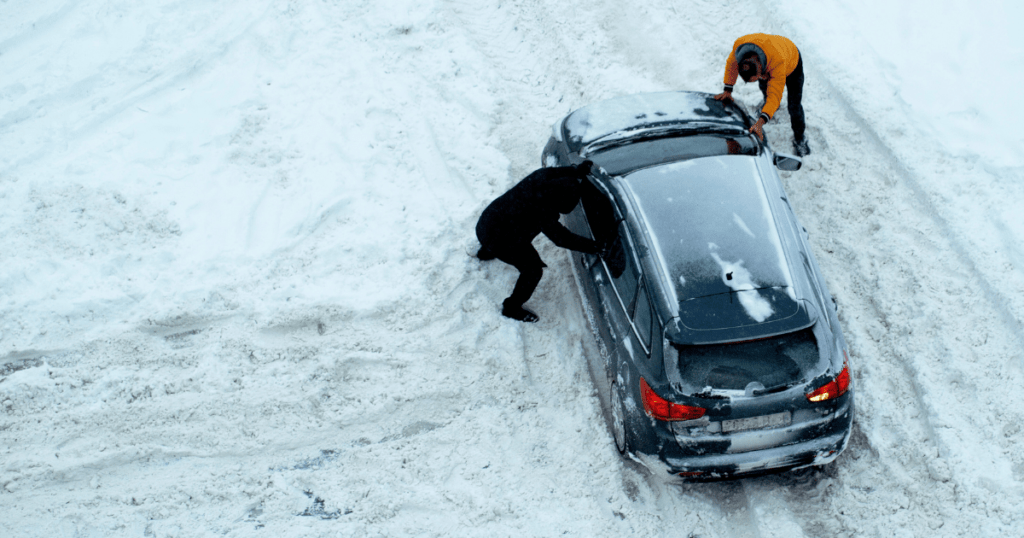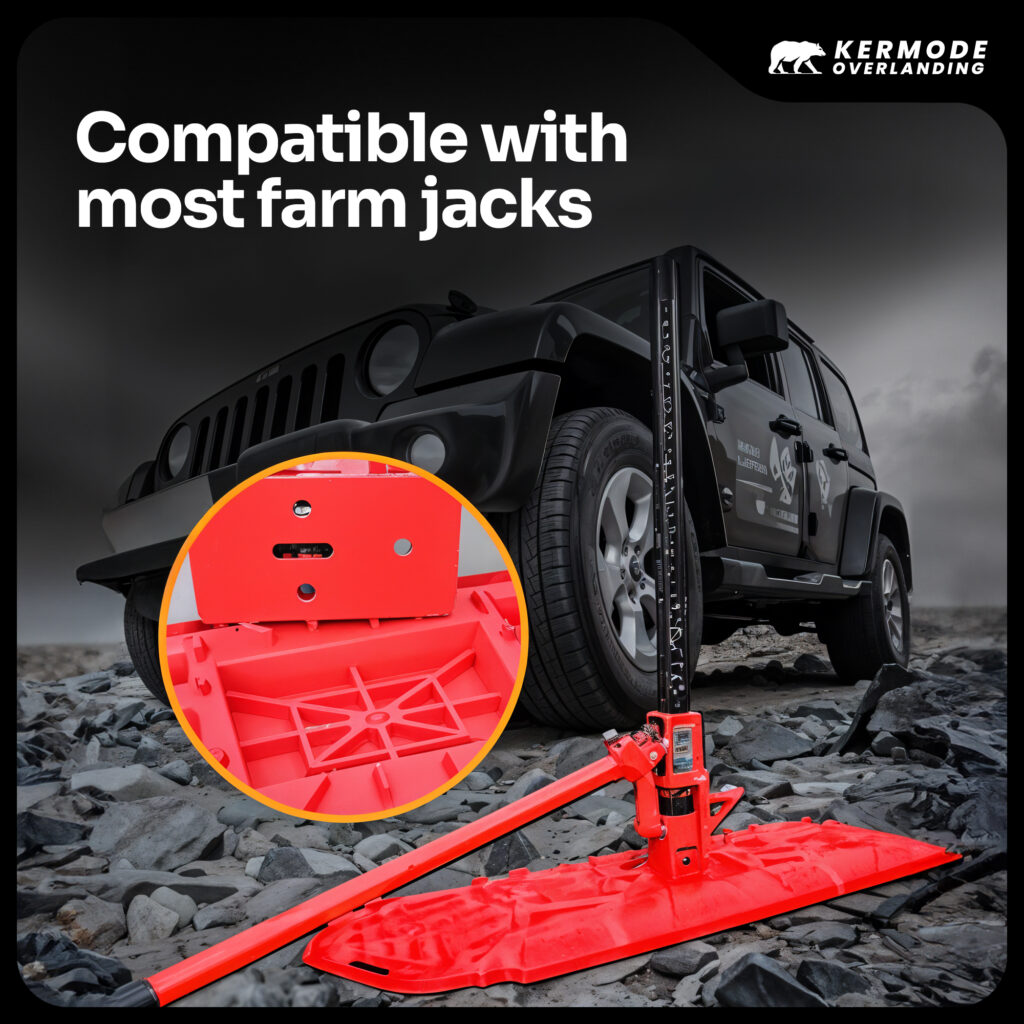Did you know? According to ICBC, last December, nearly 1,000 crashes were reported daily in British Columbia alone due to winter conditions. Not preparing your vehicle for winter doesn’t just put you at risk, it endangers your family and everyone else on the road.
Given these alarming statistics, this blog is here to guide you on the essential preparations your vehicle needs before embarking on any major travels during the colder seasons. It’s crucial to ensure your safety while still enjoying the winter months, whether you’re exploring the great outdoors or simply getting from one place to another. This guide is designed to help you prepare your car, so you can continue your outdoor adventures with the safety and peace of mind that you and your loved ones deserve.
Just because the weather turns colder doesn’t mean you have to stop doing what you love. Whether you’re heading out for a winter camping trip, hitting the slopes, or just navigating icy roads, making sure your vehicle is ready for the challenge is essential. Here’s what you need to do to ensure your car is equipped for whatever the winter months throw at you.
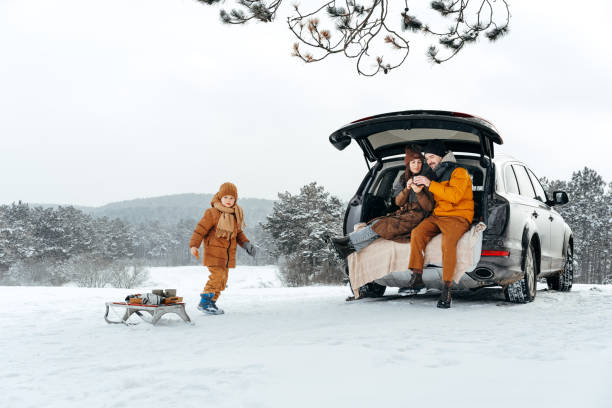
1. Winter Tires: The Essential First Step
We know you’ve heard it before, but it’s worth repeating, winter tires are a must. We’ve tried pushing through Canadian winters with summer tires, and it’s just not worth the risk. When the temperatures drop, summer tires harden and lose grip, turning your vehicle into a sliding hazard.
Did you know that vehicles with winter tires are 38% less likely to be involved in a winter collision? Despite this, nearly one-third of Canadian drivers outside Quebec still don’t use them, often believing all-season tires are enough.
With over 22 million vehicles in Canada, many are still skidding on icy roads. If you’re on the fence about winter tires, consider this your nudge to get winter-ready.
Choosing the Right Winter Tires
- For Overlanding: Opt for aggressive tread patterns like the BFGoodrich All-Terrain T/A KO2 for snow and rough terrain.
- For General Driving: The Michelin X-Ice Snow is perfect for city streets and highways, offering excellent ice and snow performance.
- For Light Trucks and SUVs: The Bridgestone Blizzak DM-V2 provides stability for heavier vehicles on icy roads.
Investing in the right winter tires not only protects you but also keeps everyone on the road safe. Don’t let winter stop your adventures—just be prepared.
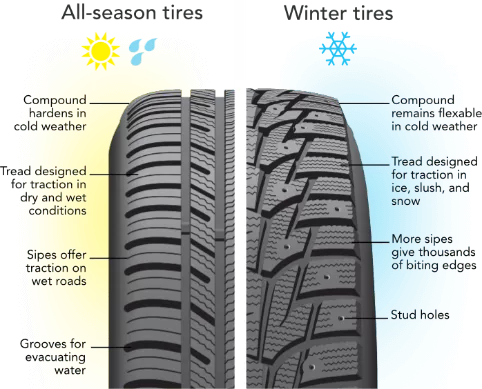
2. Essential Vehicle Checks Before Winter Driving
Before hitting the road during winter, whether for overlanding, camping, or long drives, there are crucial checks you need to perform to avoid negative experiences:
Battery Health: Cold weather can reduce a battery’s power by up to 50%. Ensure your battery is fully charged and has enough capacity to start your vehicle in freezing temperatures. If your battery is over three years old, consider having it tested or replaced to avoid being stranded.
Fluids:
- Antifreeze/Coolant: Your engine relies on antifreeze to prevent freezing. Check the levels and ensure the mixture is appropriate for the temperatures you’ll be encountering.
- Oil: Use winter-grade oil, which remains fluid in lower temperatures, ensuring your engine runs smoothly.
- Windshield Washer Fluid: Regular fluid can freeze on your windshield, so switch to a winter formula that stays liquid even in sub-zero conditions.
Tires and Pressure: Besides having winter tires, make sure your tire pressure is correct. Cold weather reduces tire pressure, which affects traction and fuel efficiency. Regularly check and adjust as needed.
Brakes: Icy and snowy conditions put extra stress on your brakes. Ensure they are in top condition, with no worn pads or low fluid levels.
Lights and Visibility: Shorter daylight hours mean you’ll be driving more in the dark. Check that all your lights are functioning, including headlights, brake lights, and turn signals. Also, replace wiper blades if they’re worn out.
3. Essential Items to Carry for Winter Travel
Even with the best preparations, winter driving can be unpredictable. Here’s what you should have in your vehicle to handle unexpected situations:
Portable Power Station: A reliable power station like the NOCO Boost Plus GB40 (1000 Amps) can jump-start your vehicle in freezing conditions. It’s compact, easy to use, and powerful enough to get most vehicles up and running in no time.
Emergency Kit: This should include a first-aid kit, flashlight, blankets, extra clothing, and high-energy snacks. These items are crucial if you get stranded in remote areas or during extreme weather.
Traction Aids: Carry traction mats or sand/kitty litter to help you get out of icy spots if your vehicle gets stuck. These are lightweight but can save you from a frustrating situation.
Snow Shovel and Ice Scraper: A collapsible snow shovel can help you dig out if you’re snowed in, and an ice scraper ensures you can clear your windows for safe driving.
Tire Chains: If you’re heading into mountainous or particularly icy regions, keep a set of tire chains in your vehicle. They provide extra traction in severe conditions and may be required in some areas.
By taking these precautions and carrying the right gear, you’ll be better prepared to handle whatever winter throws your way, ensuring your trips are safe and enjoyable.
4. Winter Driving Tips
Here are a few key tips we’ve learned from experience:
1. Slow Down and Increase Distance: Icy roads can double your stopping distance. Slowing down and giving more space between cars is crucial to avoid sliding into trouble.
2. Be Alert for Black Ice: Black ice is almost invisible and often forms on bridges or shaded areas. If you hit it, stay calm, steer straight, and avoid sudden movements to keep control.
3. Skip Cruise Control: Cruise control can be dangerous in winter. If your car starts sliding, it might try to accelerate, making it harder to regain control. Stick to manual driving.
4. Plan and Stay Updated: Always check the weather and road conditions before heading out. Stick to main roads and let someone know your route and ETA.
5. Stay Calm if Stuck: If you get stuck in snow, don’t panic. Stay in your vehicle, keep the exhaust pipe clear, and use your phone to call for help if needed.
For Overlanders
1. Be Prepared for Remote Challenges: When overlanding or camping, you’re often far from help. Carry extra fuel, food, and warm clothing. A portable stove and a cold-rated sleeping bag are essential if you need to wait out a storm or warm up quickly.
2. Monitor Tire Pressure: Cold weather causes tire pressure to drop, which can reduce traction on icy or snowy trails. Check and adjust your tire pressure regularly to maintain grip, especially when off-roading.
3. Pack Essential Recovery Gear: Off-roading in winter can be tricky. Always have a recovery kit with traction boards, a winch, and a shovel.
These tips can help you navigate winter roads safely, ensuring your adventures remain enjoyable and stress-free.
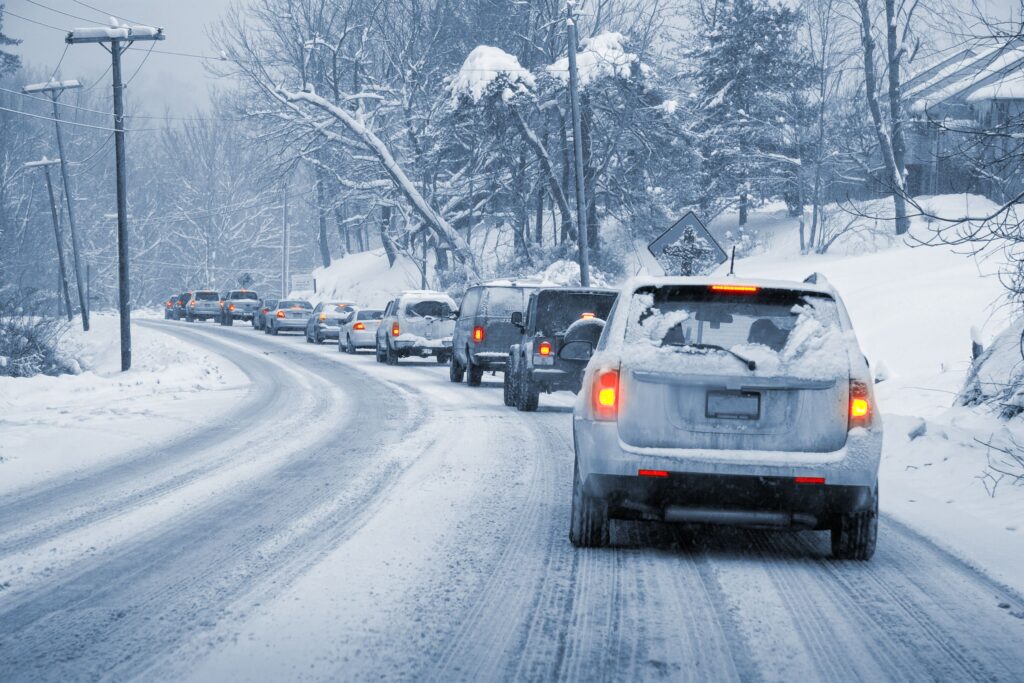
5. Storing Your Vehicle for Winter: Keep It Adventure-Ready
If you’re parking your overlanding rig or adventure vehicle for the winter, you’ll want to ensure it’s ready to roll when the next trip calls. Whether you’ve got a Jeep or a truck that’s reserved for camping and off-roading, keeping it in top shape during the off-season is key. Here’s what you should do: fill up the gas tank and add a fuel stabilizer, change the oil, inflate the tires to prevent flat spots, use a battery tender or disconnect the battery, avoid using the parking brake, and cover the vehicle with a breathable car cover. These steps will help ensure your vehicle is primed and ready for your next overlanding adventure, even after months of sitting idle.
Preparing your vehicle for winter is crucial, whether you’re overlanding, camping, or just driving around town. Winter tires, essential checks, driving tips, and proper storage can make all the difference. If you’ve taken these steps, thank you for keeping the roads safer. If not, now’s the time—spend a little to protect yourself, your loved ones, and others on the road. Safety first, always.

